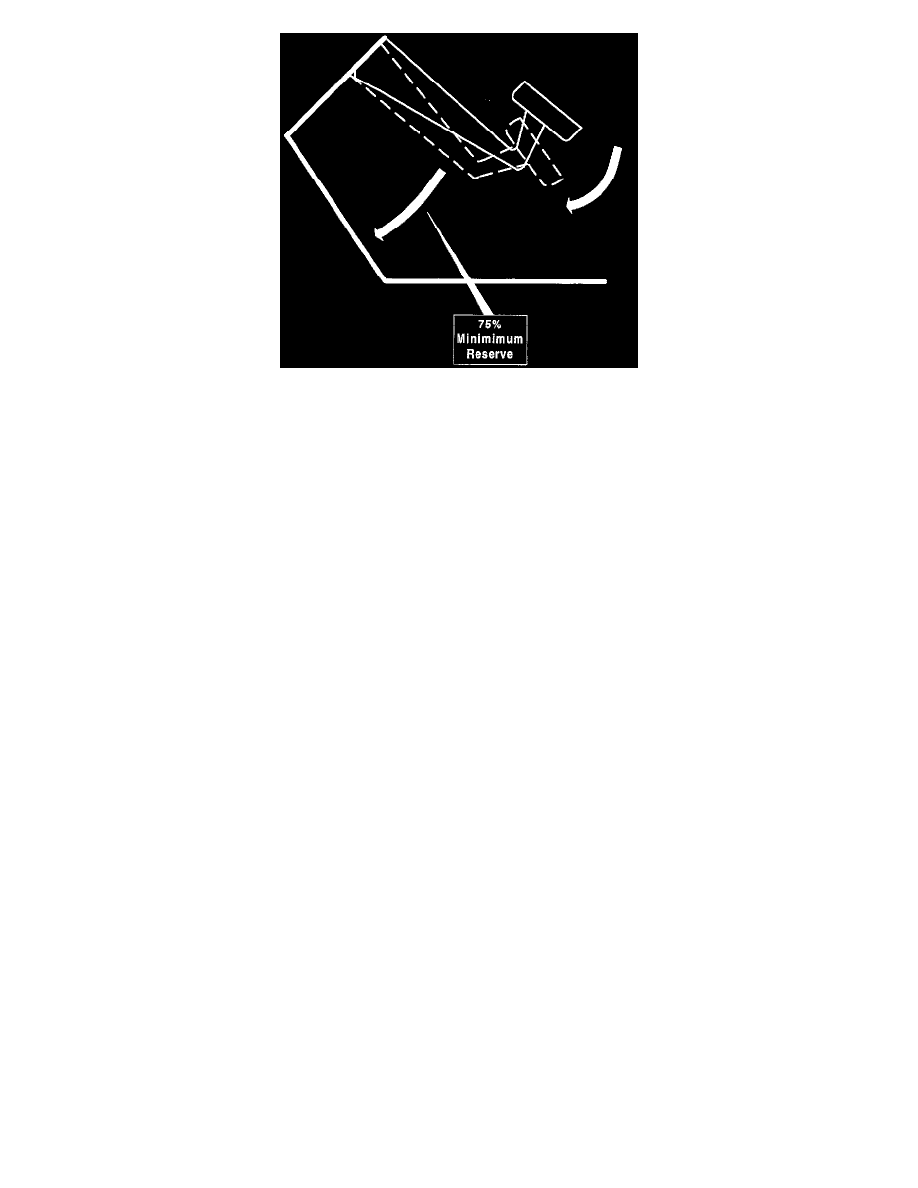F 250 2WD Pickup V8-7.3L DSL Turbo VIN F (1994)

Pedal Reserve Checks
-
The pedal should be firm and not leak down.
Replace the master cylinder if all of the following conditions exist:
-
The brake pedal is not firm with a 75% reserve and -
-
There were no problems with any of the related systems and -
-
The entire brake system has been bled and -
-
The rear brakes are properly adjusted.
Inspection
INSPECTION
Inspect for Leakage
NOTE: The master cylinder should be cleaned thoroughly prior to inspection (several days preferably). Spilled brake fluid can be easily
confused with leakage.
Piston Seals
-
Leakage around the piston seals will seep out from the end of the cylinder and leak down the outside of the brake booster.
-
Inspect for signs of seepage or bubbled paint on the brake booster.
-
If any leakage is detected the master cylinder should be replaced or overhauled
Brake Line Fittings
-
While someone is applying pressure to the brake pedal, inspect the brake line fittings on the master cylinder for leakage.
-
If the fittings are leaking they should be disassembled and inspected.
Reservoir to Cylinder Gasket
-
Inspect the gasket for signs of leakage or hardening and cracking.
-
Overhaul or replace the master cylinder if any leakage is indicated.
Inspect for Oil Contamination.
-
Inspect the rubber gasket on the inside of the master cylinder lid. If the gasket is swollen or bloated, the brake fluid is contaminated with
oil.
-
Siphon or scoop a small amount of brake fluid out of the master cylinder and place into a styrofoam cup filled 2/3 of the way with water.
Brake fluid will mix with the water while oil contaminants will float on the surface and dissolve the styrofoam.
NOTE: If any oil contamination is present ALL brake components containing rubber seals will need to be replaced or overhauled.
This includes the master cylinder, both front brake calipers, both rear wheel cylinders, and all flexible brake hoses.
Verify Hold-Down Bolts Are Tight
-
While someone is applying and releasing pressure to the brake pedal, verify the the master cylinder is tightly secured to the brake booster.
-
Retighten hold-down bolts if necessary.
